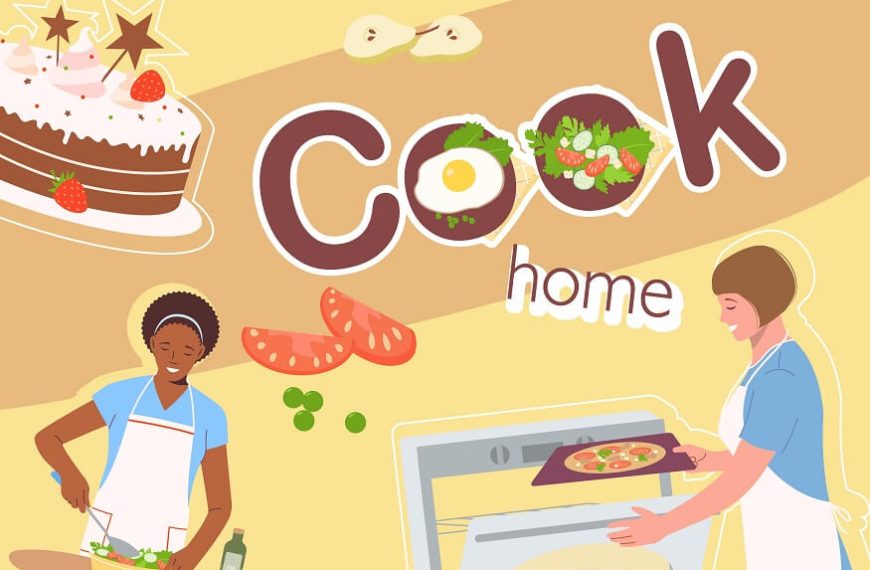Cooking together with kids has several benefits, including strengthening family bonds and enhancing kids’ self-esteem. It also inspires kids to try new, healthful meals. Introducing kids to new words related to the kitchen, cooking, and food is an additional benefit of cooking with them. Children have the chance to pick up a few new culinary terms through hands-on experience in the kitchen or just by watching their parents prepare. Thus, please make use of this opportunity to call their attention to these crucial English cookery verbs.
Children may investigate their environment and items by touching, feeling, smelling, tasting, and hearing as they learn via first-hand experience. Children find this technique of learning more engaging and productive since they are inherently interested.
Understanding The Significance
Learning the pre-writing strokes is the first step in a child’s writing development. These writing strokes involve fundamental motions and patterns that set the stage for later, more difficult writing assignments. Children begin refining these abilities in kindergarten, which is a critical time that sets them up for success in school.
Prioritising pre-writing abilities throughout a child’s early school years is crucial. These abilities provide the groundwork for a lifetime of successful communication by facilitating a smooth transition into formal writing. In this blog, we discuss the significance of pre-writing strokes for kindergarteners and look at entertaining exercises that might improve these foundational abilities.
Benefits Of Learning Cooking Verbs For Children
For youngsters who are continually watching and exploring the world, learning anything new is always useful. Children benefit from learning verbs connected to cooking in a number of ways.
- Increases their vocabulary
- Encourages their interest in domestic tasks
- It increases a person’s curiosity about the food they eat and strengthens their positive relationship with it.
- Teaches children how to read and adhere to recipes
- A deeper comprehension of the scientific principles involved in cooking
- Improved comprehension of phrasal connections to cooking verbs in other contexts, such as “You have bigger fish to fry” or “A watched pot seldom boils.”
List Of Cooking Verbs For Kids With Meaning
One of the best activities that involves many various kinds of operations is cooking. Words that specifically describe each of these procedures are available. Let’s learn some new culinary verbs with illustrations to better grasp each of these acts. The list of culinary verbs, from a to z, is organised alphabetically below.
- Add:
- Bake:
- Boil:
- Chop:
- Dice:
- Fry:
- Grate:
- Grill:
- Knead:
- Marinate:
- Mash:
- Mix:
- Peel:
- Rinse:
- Roast:
- Roll-Out:
- Saute:
- Scramble:
- Sift:
- Simmer:
- Slice:
- Spread:
- Squeeze:
- Stir:
- Whisk:
To arrange one item inside a group or another item. For example, mix one cup of milk with two cups of water.
To cook anything in an oven using dry heat. For example, bake the cake in a preheated oven for thirty minutes.
To bring water to a boil for cooking. For instance, she’s making soup by boiling the stock.
To reduce something’s size by cutting it. For example, finely chopped carrots and onions.
Dice the potatoes and add them to the saucepan to chop the meal into tiny pieces.
For cooking in heated oil or fat, thinly slice the mushrooms and sauté them in butter.
Shred the cheese into tiny pieces using a grater and transfer it to a mixing dish.
To cook meals on a flat metal frame over a fire or hot coals. My father hasn’t barbecued the meat yet.
To repeatedly press a flour and water mixture with your hands. Utilising a floured surface, knead the dough.
To leave meat or fish in a marinade or to immerse it in one: He marinated the steak for many hours in red wine vinegar.
Food should be mashed until it is smooth and mushy. For example, mash the fruit so the infant can eat it.
Mix around 50 grammes of flour and a small sprinkle of salt to integrate or blend into a single mass or mixture.
I sliced my finger peeling potatoes in order to remove the skin from fruit and vegetables.
She ran a cold tap over the veggies to swiftly wash something, especially without using soap.
To prepare food over a fire or in an oven: To roast the meat, place it in the oven.
Roll out the dough into a single, big circle to make the food that you are making flat and thin by rolling a rolling pin over it.
When cooking rapidly, sauté onions in a small amount of heated oil or fat until they turn brown.
Beaten eggs should be cooked by gently stirring them until hard. Compared to boiled eggs, my sister loves scrambled eggs.
Sift the flour wellinto a mixing bowl after straining the flour and sugar through a sieve or other similar device to get rid of significant bits.
Allow the soup to simmer wellfor a few minutes in order to cook it gently and just below boiling.
Adding thinly sliced onions to the meat is one way to chop anything into flat, thin pieces.
To apply a thin layer of soft food to a surface: She gave his bread a dollop of strawberry jam.
She squeezed some lemon juice onto the fish, pressing something, like a liquid, out of it.
Using a spoon or other similar tool, stir a liquid or other item until it starts to boil. To mix my tea, I need to use a teaspoon.
To use a fork or whisk to beat eggs, cream, etc., and whisk two egg whites until firm.
Engaging Activities to Enhance Pre-Writing Strokes
- Activity 1: Stirring Up Learning
- Activity 2: Tracing the Recipe
- Activity 3: Creating a Cooking Story
- Activity 4: Cook Verb Form Sculptures
Start with an essential exercise that emphasises circular pre-writing strokes and introduces the lexicon of culinary verbs. Give a bowl and a wooden spoon to every youngster. Utilise materials such as rice or flour and instruct the kids to stir in a circular manner. Introduce cookery verbs such as “mix the ingredients together” or “stir the mixture slowly” while they stir. In addition to improving fine motor abilities, this exercise introduces verbs used in kitchen language.
Make a fake recipe book with easy recipes and how-to guides. Ask the kids to trace the list of culinary verbs that correspond to each phase. For instance, ask the kids to trace the word “cut” on a sheet of paper if the recipe calls for chopping vegetables. Writing exercises and a vocabulary of culinary verbs are combined in this programme to improve motor skills and literacy.
Have the kids write their own culinary stories to foster creativity. Request that they create illustrations for each stage and compose a brief text utilising cooking verbs. This practice helps with pre-writing strokes and fosters creative thinking and narrative abilities.
Create the many forms of the verb “cook” with playdough or clay to add a tactile aspect to prewriting exercises. Youngsters may reinforce the forms connected with writing by using their fingers to form letters and phrases. This hands-on method enhances the learning experience for younger students by adding a sensory component.
It is impossible to overestimate the value of pre-writing strokes for kindergarteners. These fundamental abilities give young students confidence and provide the groundwork for future academic success. Teachers and parents may make learning fun and efficient by implementing engaging activities that use culinary verbs list and vocabulary. In addition to improving pre-writing abilities, we are fostering a lifelong love of learning as we stir, trace, and create.
















